
Courtesy publicdomainpictures.net
“The clothes make the man. Naked people have little or no influence on society.” –Mark Twain
I’ve had the pleasure of working at home in my sweats, pajamas, and bunny slippers for the past several months, and I’ve got to tell you, that particular perk of self-employment is way over-rated. There’s something about having just the right outfit for work that makes you want to, well, actually work.
My first real, grown-up suit was from Ann Taylor. It was a “power suit” that my mom bought for me in anticipation of my college graduation. It was blue worsted wool with a kick pleat in the narrow skirt and a stylish cut that made me feel like Rosalind Russell in His Girl Friday. I was totally posifticated.
Sure the wool was itchy, I ripped my panty hose half the time, and I’ve always been walking-in-pumps-challenged, but I could swear my vocabulary went up an SAT point or two when I wore that suit. I joked that it was actually made of armor, because it protected so well from my workplace insecurities.
Having the right outfit made me feel busy, important, like someone on the move with places to go and people to see. My power suit also made me stand up a little taller, maybe even work a little harder.
The right clothes can do that for you. The right outfit can work wonders. But it’s got to be the right outfit in the right place. Your derriere may rival J-Lo’s in those awesome $900 jeans, but that doesn’t mean they’ll fly at a funeral. And unless you’ve got an Olympic gold medal coming your way, that banana sack Speedo is always a fashion don’t.
In the TV show, How I Met Your Mother, Doogie Howser is one of the rare males to extol the virtues of “suiting up” to his friends. Like Superman, Batman, and George Clooney, Doogie knows the power of the suit.
Most men don’t get this, despite the metrosexual revolution of hair gel and manscaping.
My husband would actually prefer to wear an old pair of pants till they literally fall apart, than buy something new that wouldn’t be “quite as soft and comfy.” The other day, he had the nerve to ask me if I really thought I needed a 27th pair of black pants when I hadn’t worn out the other 26 pairs yet. Since when do women wear out their clothes? Other than gym shoes, I haven’t worn out an article of clothing since the 5th grade.
Besides, can you see how slimming this new bonded cotton fiber is? This is the pair of pants that is going to revolutionize my whole wardrobe in a way the salmon pink pashmina shawl of 2003 and the neon green polyester wrap skirt of 1989 only promised to.
Plus — and here’s the real kicker — like the four-inch hoop earrings of 1993 and the Madonna corset of 1987, having this new pair of pants makes me feel good. Not as good as it would if they were a size 8, but there’s an issue for another column.
Men don’t understand our relationship with clothes.
Shockingly, I have a theory about this. It all comes down to tuxedos.
There’s a reason men look so good in tuxedos (the 1980s polyester pastel/ruffled shirt phase and my unfortunate prom pictures aside). Most men stand a little taller and behave a little more politely when they’re dressed in a traditional black tux. Plus they can feel confident they’re dressed appropriately, and they never seem to worry that someone else has appropriated their look.
For a woman there’s nothing worse than seeing another woman in the same dress — unless of course that other woman is younger and thinner. Can you imagine walking into a formal party and hearing a man say how embarrassed he is, because there’s another man in a black tuxedo?
They say every bride is beautiful because she’s so happy and in love. I say it’s all about the clothes. Think about it: she’s standing next to man in a tux, and all of her best friends are lined up next to her — in the most unflattering garments imaginable. As a bride you can’t help but giggle at the unflattering glow the puce green taffeta sheds on your beautiful cousin Rhonda’s face.
Bridesmaid’s dresses are intentionally ugly because they’re all about flattering the bride. It’s the law.
But what’s the law for work clothes? I would feel ridiculous putting on a power suit just to sit and type in my kitchen. And we have no air conditioning, so I’d be taking my jacket off and putting it back on all day long. Plus I couldn’t afford the dry cleaning bill every time the spontaneous urge to dust the blinds or paint the kitchen attacks, as it sometimes does when I’m on deadline.
Like my mother, and grandmother, and great-grandmother, I decided the only cure for this particular ailment was a little bit of retail therapy. Unlike my foremothers –who didn’t have the Internet– I didn’t even have to suit up to leave the house to go shopping. There I found a whole new category of clothes for stay at home workers — loungewear.
To the naked eye, my new duds may look like yoga pants and t-shirts, but I know a power suit when I see one.
Want to know what Leslie’s wearing next week? Email her at email
Originally published in Santa Barbara Daily Sound on April 28, 2006.

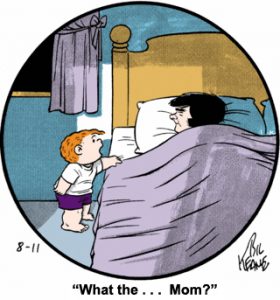

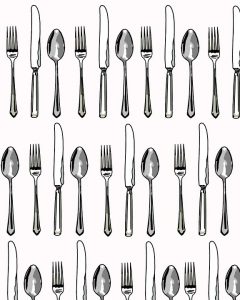
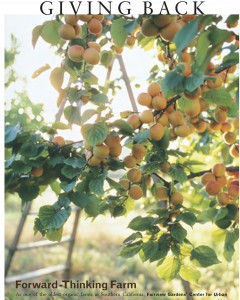
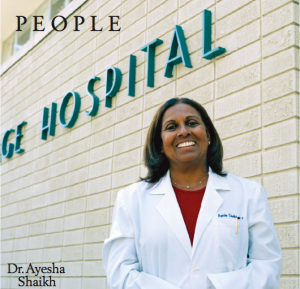
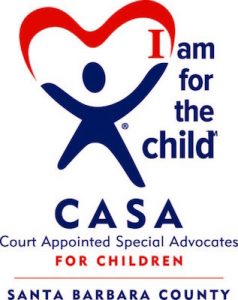 “When I started I expected nothing for myself,” said Doris Becker, recalling her ten years as a volunteer
“When I started I expected nothing for myself,” said Doris Becker, recalling her ten years as a volunteer